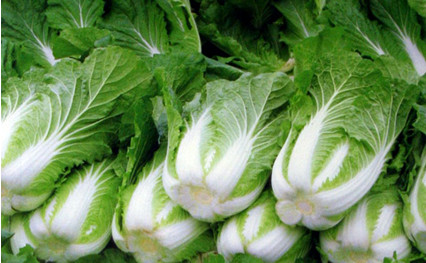High-yield planting and Culture techniques of early-maturing Autumn Chinese Cabbage
1. Select superior species. Early-maturing autumn cabbage should choose varieties with good early maturity, strong heat tolerance, strong disease resistance and high yield, such as small hybrid varieties, Zaoxinbai and so on.
2. sow seeds at the right time. The growth period of early-maturing autumn cabbage is generally 50-60 days, and it is better to go on the market before the middle and late mature autumn cabbage with large planting area. Sowing too early is easy to induce diseases and insect pests. If the sowing time is too late, it will delay the listing time and lose the significance of precocious cultivation.
The suitable sowing date of early-maturing autumn cabbage is from late July to early August, about 10 days before the Beginning of Autumn, and the listing time should be before the National Day.

3. Balanced fertilization. Early-maturing autumn cabbage is a high-yield vegetable variety, with a general yield of about 4000 kg per mu and a large demand for fertilizer. The principle of fertilization is to attach importance to base fertilizer and apply fertilizer properly. Before sowing, 5000 kg of high-quality farm manure and 40 kg of high-N, low-P and medium-K compound fertilizer were applied. The previous crop had better be the plot where cruciferous vegetables have not been planted, such as growing vegetables for many years, and applying 2-3kg biological fertilizer per mu can improve the soil condition and enhance the resistance of cabbage to diseases and insect pests.
4. Field management. In the early and middle growth period of early-maturing autumn cabbage, in the high temperature, high humidity and rainy season, the root system of Chinese cabbage is shallow, and it is not tolerant to drought and waterlogging. If there is serious drought and waterlogging weather, it will cause the occurrence of diseases and insect pests and seriously affect the yield. In production, the traditional planting methods can be actively improved, such as the use of high ridge cultivation techniques to preserve soil moisture in case of drought and drainage in case of waterlogging. Early-maturing autumn cabbage should be planted on demand, with 3-4 seeds per hole and seedlings twice. Strictly control moisture after setting seedlings, squat seedlings for about 10 days, focus on strengthening fertilizer and water management after entering the rosette stage, 20 kg of urea or nitrogen and potassium fertilizer combined with watering at the initial stage of rosette, and 20 kg of urea at the peak stage of heading. In the heading period, the soil can be dry and wet, ensure adequate water supply and increase yield.
5. Prevent diseases and insects. The growth period of early-maturing autumn cabbage is under the condition of high temperature and high humidity, and the occurrence degree of diseases and insect pests is high, such as aphids, tobacco green insects, cabbage green insects and soft rot are common diseases and insect pests. For aphids, 1000 times of imidacloprid can be sprayed, and 1500 times of cypermethrin can be sprayed by tobacco green insects, cabbage insects and other pests. The occurrence of soft rot of Chinese cabbage is very common in high humid environment. Agricultural streptomycin spray can be used to control the disease at the initial stage. In serious cases, it is necessary to pull out the roots and take it out of the field and bury it deeply, and spread quicklime around the disease to prevent the spread of bacteria.
6. Timely harvest. The growth period of early-maturing autumn cabbage is relatively short, generally about 50-60 days. When the leaf bulb grows to compact porcelain, the outer leaves turn yellow, and the weight of a single plant is about 2 kg, it can be cut down. When harvesting, use a machete or kitchen knife to cut off the base of the cabbage root, remove the old leaves, diseased leaves and yellow leaves, and keep two or three leaves outside the bulb to prevent mechanical damage and protect the bulb.
Related
- Fuxing push coffee new agricultural production and marketing class: lack of small-scale processing plants
- Jujube rice field leisure farm deep ploughing Yilan for five years to create a space for organic food and play
- Nongyu Farm-A trial of organic papaya for brave women with advanced technology
- Four points for attention in the prevention and control of diseases and insect pests of edible fungi
- How to add nutrient solution to Edible Fungi
- Is there any good way to control edible fungus mites?
- Open Inoculation Technology of Edible Fungi
- Is there any clever way to use fertilizer for edible fungus in winter?
- What agents are used to kill the pathogens of edible fungi in the mushroom shed?
- Rapid drying of Edible Fungi



